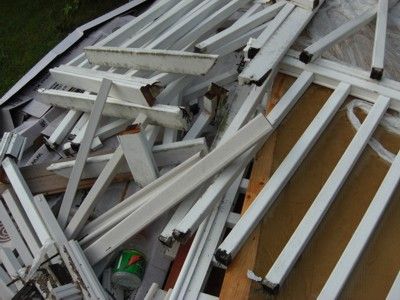The secret to a deck railing that won’t easily rot

Dear Tim: The wood deck railing at my home rotted prematurely and needs to be replaced. How long should deck railings last? I love mine but wonder if I should replace it with a vinyl deck railing or even an aluminum one. I have been on other decks that are old, but the railings are in excellent shape. What is the secret? – Kate M., Bean Station, Tenn.
Dear Kate: What a shame your deck railing gave up the ghost before its time. I have installed new deck railings on homes just like yours where excellent lumber failed. In almost all cases the wood rot was caused by one or two problems. Poor deck railing design is one reason, and poor workmanship is the other. Combine them both on the same job and you will have a mess in short order. A well-built wood deck railing can last decades.
Years ago my neighbor hired me to replace a porch deck railing that surrounded a flat roof that they could access. The railing had been painted numerous times and was constructed with redwood. Redwood is a fantastic material for outdoor projects as it contains natural preservatives. But even redwood can rot.
As I demolished the old deck railing, I readily saw why the railing could never hold paint well, and why it had rotted. The railing had been assembled by the carpenters before the painters had applied the white paint. There were countless cut ends of the wood and hidden areas where one piece of bare wood touched up against another. It was impossible for the painters to coat these areas once the railing had been assembled. My guess is that your railing suffered the same fate.
To prevent the same thing from happening again, I took the time to precut as many of the pieces of the new railing as possible. This was not as hard as you might think. The pieces that needed to be cut at the last moment were minimal. It was easy to predetermine the length of all of the posts, pickets and horizontal railing components.
I instructed my neighbor to have his painter come and pre-paint all of the deck lumber, including the longer pieces that I still needed to cut. Each piece of redwood was primed and second-coated with paint on all surfaces and cut edges. The end grain of each piece really soaked up the paint, and the painter coated many of these places three times. Once the deck railing was built, the painter had to come and do the final coat.
By applying the paint over every square inch of wood surface, we were able to stop water from soaking into the wood deck-railing parts. Water that enters wood through the end grain or is allowed to hide where pieces of wood overlap can start the rotting process quickly. This deck railing is now nearly 20 years old and I can’t see one place where the paint is peeling. Peeling paint on deck railings is usually a sign that water is entering the wood.
When I rebuilt the railing for my neighbor, we painted the cut edges twice before we assembled the wood. This took extra time, but it is one secret tip to long life for painted wood that will be exposed to the elements.
There are many deck railing systems that are not made from wood and require little, if any, ongoing maintenance other than cleaning. You may be surprised to discover that some of them are not more expensive than the cost to rebuild and repaint the wood deck railing you desire. You’ll have to decide if you can live with the look.
No matter what deck-railing system you choose to use, be aware that there are strict building-code requirements as to the height of the rail, the strength of the system and the spacing of the components. Safety is very important as people die or are seriously injured each year when they fall from decks because of failed railings.